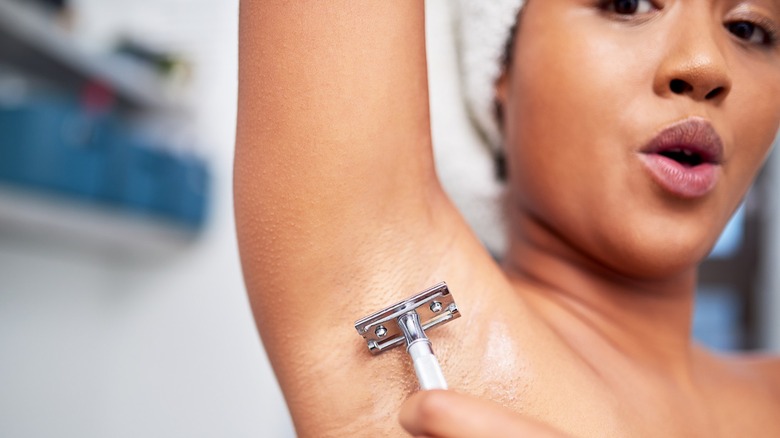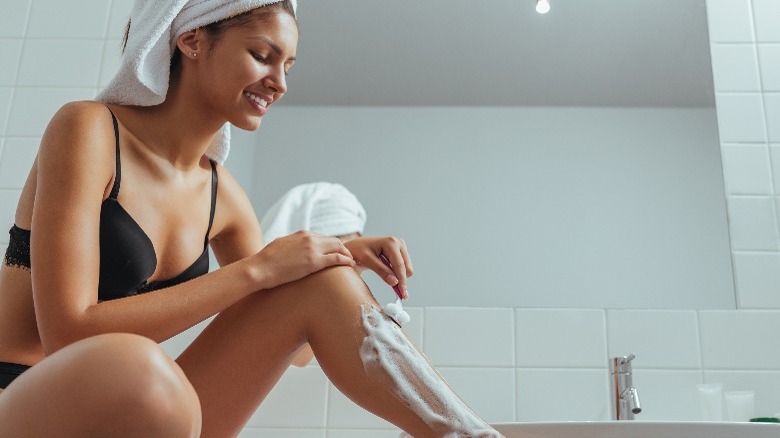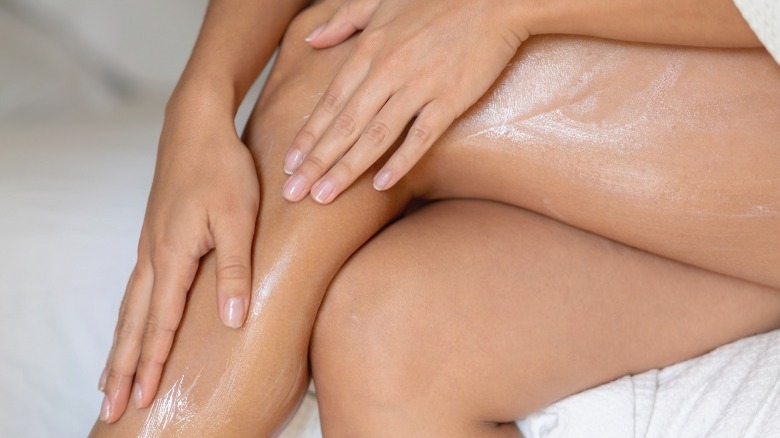Bye, Razor Bumps! We're Rocking Smooth Skin This Summer - Here's How
For those who choose to shave, razor bumps can make the experience an unfailingly annoying ordeal. When all we want is smooth skin, why must we be punished so? Razor bumps are essentially a skin rash that occurs after shaving. They are not to be confused with ingrown hairs, though they may share similar qualities, including red bumps on the skin, and some pain or itchiness. But where ingrown hairs tend to be a single-hair situation, razor bumps tend to form all over the shaved area. This could be due to sensitive skin after shaving, or because the hair underneath the skin is struggling to reach the skin's surface.
As much as we love warmer weather, the summer can also be fraught with moments of self-consciousness, and razor bumps can put a damper on our otherwise sunny moods. Razor bumps do not need to be one more concern when it comes to our bodies; your summer plans should not bend to the mercy of your shaving routine. With the proper knowledge and techniques, it's high time you rock smooth skin this summer, both to avoid painful regrowth and to feel confident in your skin. Here's how to do it.
Evaluate your shaving techniques
There are a few ways to minimize the chances of razor bumps after shaving. First, make sure that you are shaving properly. Inspect the hair in the areas where you shave, and determine which way the hair grows. Perhaps you have been shaving against the hair instead of with it: Oops! This can cause razor bumps. Hair might not grow in the same way across each area where you shave, so be sure to check that you are adapting your shaving motion accordingly.
The frequency with which you shave can also play a factor in developing razor bumps or ingrown hairs. The more often you shave, the less probable it is that razor bumps will appear. But the kind of razor you use can also impact the aftermath of your shave. Single-blade razors are touted as the best to address razor bumps and ingrown hairs, because you scrape over the skin just once, as opposed to several times, which could lead to further irritation. Razors that include conditioner strips can also reduce the bothersome results of shaving. Be sure that you are changing out your razors frequently as well. In fact, the American Academy of Dermatology recommends using one razor for up to just seven shaves.
Prepare and polish the shaved areas
Perhaps you're going right in with a razor after lathering up a body wash on the area you're going to shave. Without proper preparation, you could be increasing your chance of developing razor bumps. While you do need to cleanse the skin before you shave, it is generally wise to prep the area with a moisturizing shaving cream or shaving gel after you rinse. Shaving creams allow the razor to scrape the skin with less friction, and ensure that your skin is quenched, which can reduce inflammation.
But the shaving experience is not over yet; tending to your skin post-shave is also crucial. In the short term, using a moisturizing lotion on the shaved areas can soothe the skin. Lotions that include soothing ingredients such as aloe and colloidal oatmeal can be a boon for razor bumps. And topicals such as hydrocortisone cream can assist in reducing itchiness and redness, should razor bumps begin to form against all odds. But long-term, regular moisturizing will also help prep your skin for the next shave. And, speaking of the next shave, it is also wise to exfoliate your skin before shaving again, ideally with a gentle chemical exfoliant, rather than a physical exfoliant, so your hairs grow back with ease. Bye, razor bumps!


